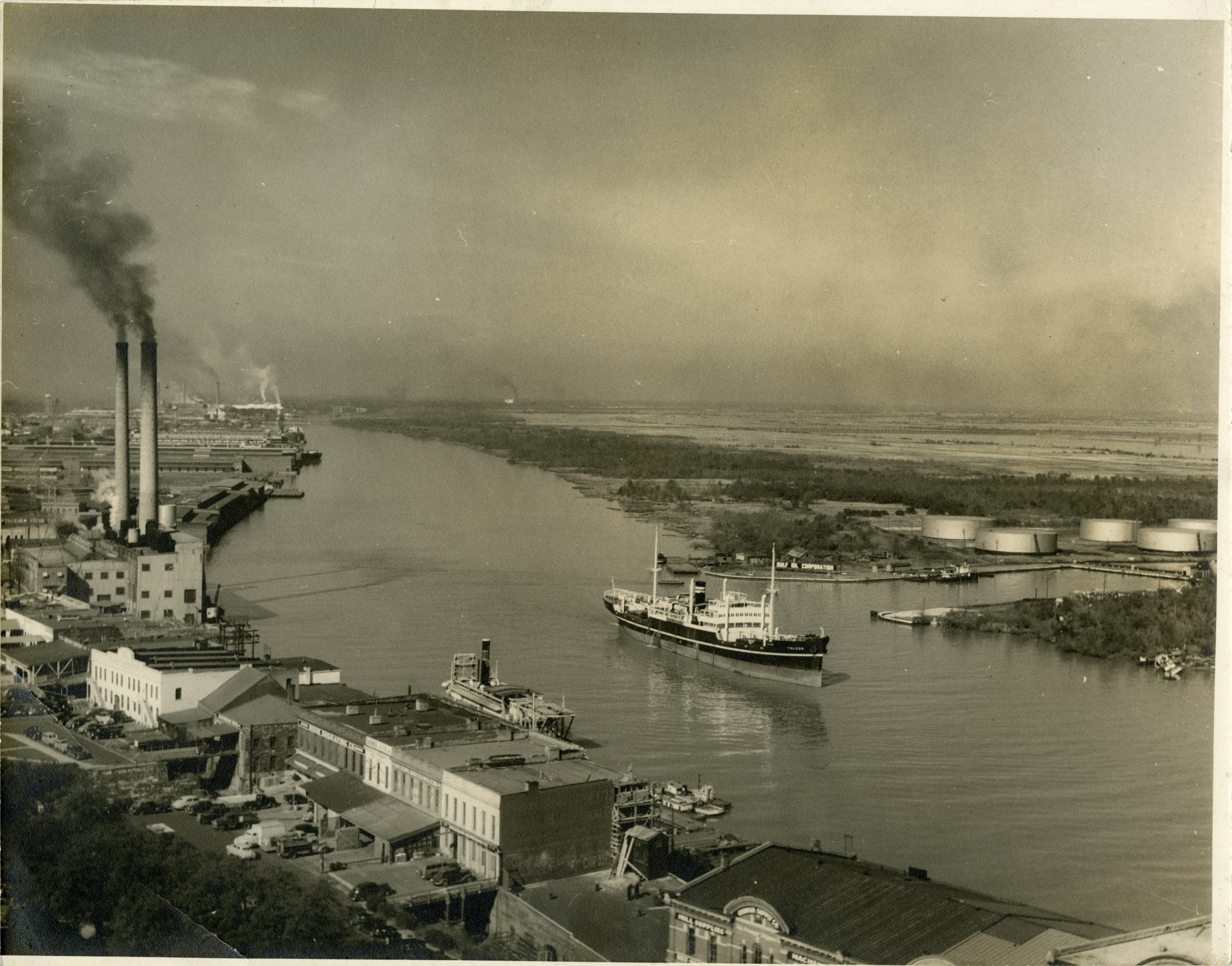To commemorate GPA’s 75th anniversary, we will be sharing 75 special features highlighting milestones in local, state, port and maritime history throughout the yea
Their entrance was exhilarating. Surrounded by tugboats spewing water, and embellished by an enormous American flag that swirled in the breeze, three massive Neo-Panamax cranes glided past River Street and arrived at the Georgia Ports Authority on a picture-perfect December day.
The procession placed an exclamation point on 2019, an incredible year for the GPA.
Its intermodal cargo numbers leaped 10.5 percent in July. The port handled 47,255 rail lifts that month, an increase of 4,511 containers over the previous record, set in July of 2018. Container figures jumped as well. They stood at 1.6 million for the fiscal year in early December, about 6 percent higher than last year.
“Two or three years ago, the Georgia Ports were taking about two or three days to take the container from the ship and load them on the train,” GPA Executive Director Griff Lynch said in a Savannah Morning News article last September. “Today, that number is 24 hours or less. That is world-class. This is the best operations team in the business.”
And, he had more good news. The GPA is aiming to construct a new container port on Hutchinson Island, Lynch announced. Combined with improvements to Garden City Terminal, the expansion will effectively double its annual capacity of twenty-foot equivalent container units (TEUs) to 11 million a year. The GPA already owns the land, and it can be rail served, Lynch added.
All this would have been difficult to envision on March 9, 1945, the day Georgia Gov. Ellis Arnall signed legislation creating the Georgia Ports Authority. The world was still at war. In Europe, American forces were getting set to cross the Rhine River and invade Germany. In the Pacific, U.S. Marines were engaged in an epic struggle at Iwo Jima.
The measure established a three-member commission to guide the authority. One from Savannah; one from Brunswick; and one at-large. It also authorized $15 million for harbor developments.
City leaders praised its passage. “As the port goes, so goes Savannah,” said Frank W. Spencer, a prominent port advocate. “Savannah is in a commercial and competitive position with such ports as New Orleans and Mobile for trade which must come through the Panama Canal.”
Acquisition and development quickly followed. In 1948, the GPA purchased what had been the U.S. Army’s Savannah Quartermaster Depot, a 407-acre tract in Garden City. It became the first GPA terminal. Ten years later, the GPA purchased the Ocean Steamship Terminal from the Central of Georgia Railway. Located on 200 acres just west of the Talmadge Bridge, it dated back to the 1870s, and once handled ship traffic, and passenger and freight service for four railroads.
The state also pitched in. In 1956, Brunswick and Bainbridge were designated as state ports. In 1961, $16 million in expansion funds were approved. A year later, improvements were made at both Ocean Terminal and Garden City Terminal, and the GPA purchased Colonel’s Island at Brunswick for $1.1
million. By 1970, Savannah ranked sixth among all U.S. ports. Over the next 50 years, the GPA advanced in deliberate, yet dramatic, fashion to the very forefront of any conversation about American seagoing trade and commerce.
Ocean Terminal is now a dedicated breakbulk and Ro/Ro facility. It handles a wide variety of freight, including forest and solid wood products, steel, automobiles, farm equipment and heavy-lift cargoes. Garden City Terminal is the third-busiest gateway for containerized cargo in the United States.
The GPA boasts the largest single-container terminal in North America with service from two Class I railroads — Norfolk Southern and CSX. It is also served by the largest concentration of import distribution centers on the East Coast and offers immediate access to two major interstates — I-16 and I-95.
Destined for the Garden City Terminal, the cranes served as a stately symbol of this status. As they made their slow passage up the Savannah River, they passed where Southeastern Shipbuilding once stood, and where more than 40,000 people once labored. During World War II, that yard constructed and launched 88 Liberty ships. Along River Street, as crowds applauded and cheered the cranes’ passage, Savannah’s antebellum cotton warehouses, multi-story, grey-brick reminders of the days when cotton was king, served as a historic backdrop. And, in the shadow of the Talmadge Bridge, a tidal lock marked the terminus of the old Savannah-Ogeechee Canal, a 16.5-mile-long connection to the Erie Canal and 1820s industrial technology.
This year, we’ll look at these, and other chapters in local and port and nautical history, a broad range of stories and subjects. Starting with this one, there will be 75 posts in all, 75 ways to celebrate the Georgia Port Authority’s Diamond Anniversary.
Sources: gaports.com; ttnews.com; Savannah Morning News articles; Georgia Historical Society papers; New Georgia Encyclopedia.
